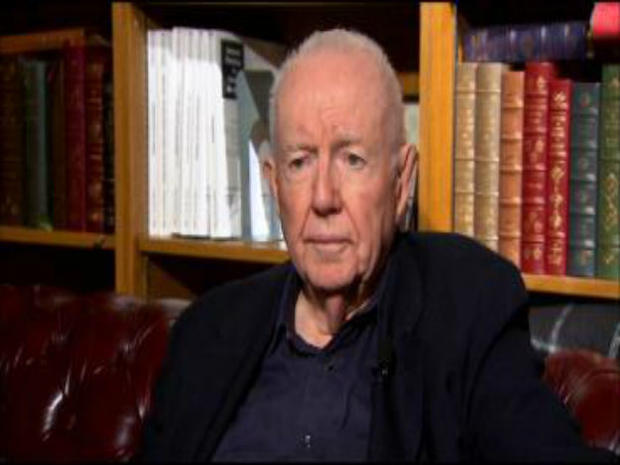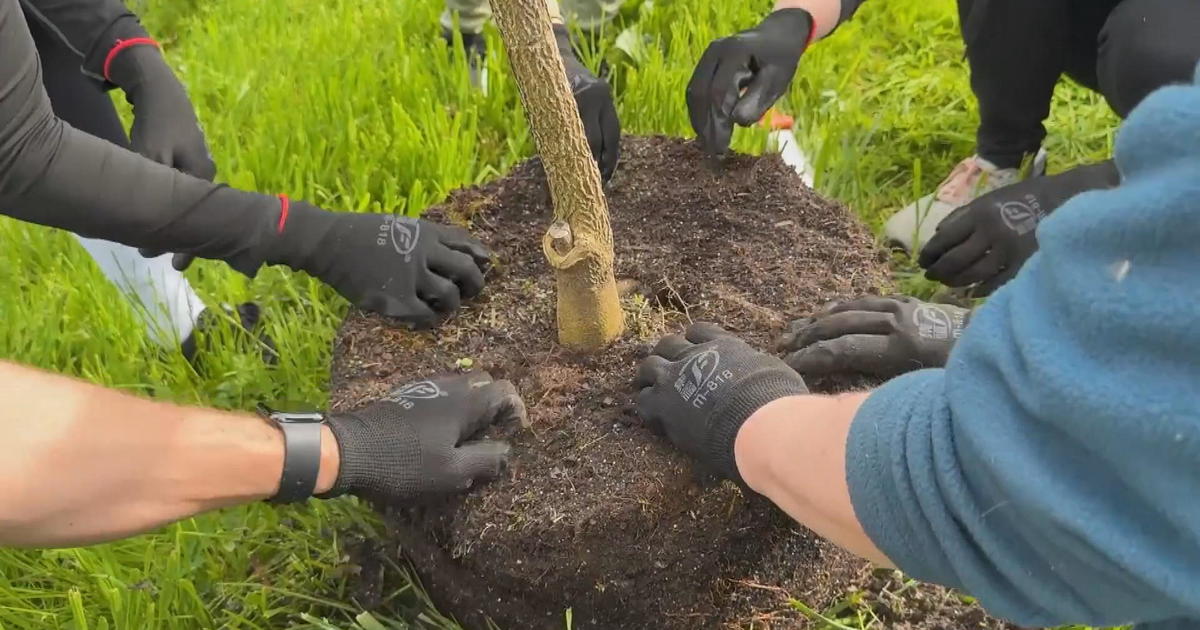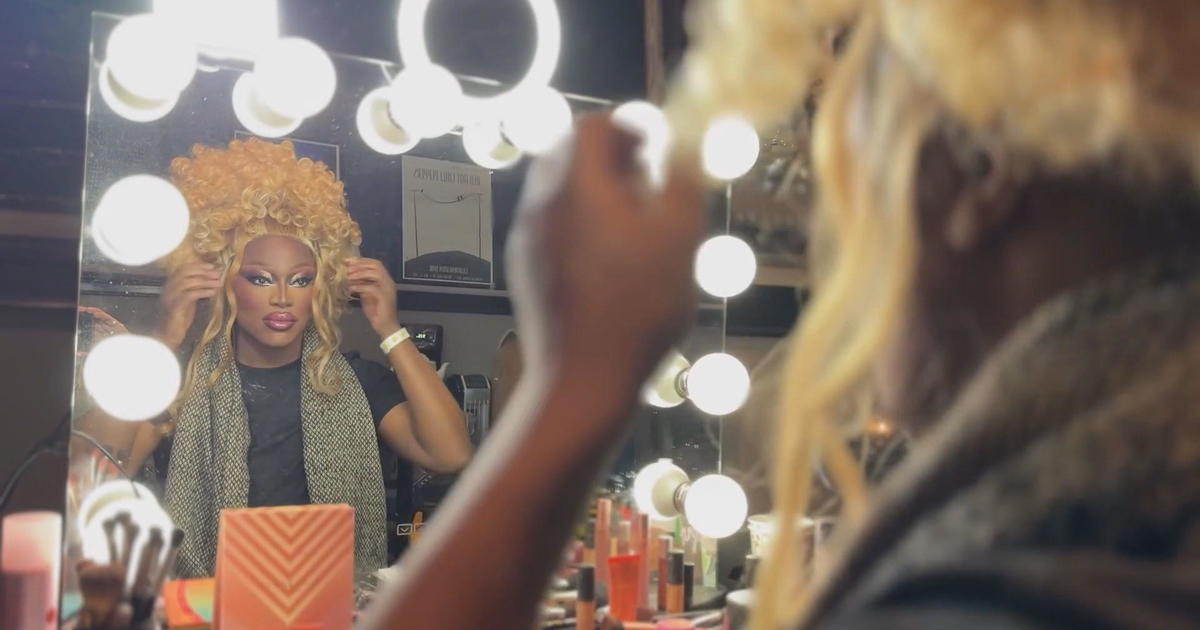As 50th Anniversary Of Assassination Approaches, Surgeon Who Treated JFK Remembers
By Chelsea Karnash
PHILADELPHIA (CBS) – Coincidence. Happenstance. Twist of fate.
Whatever you choose to call them, there are three happenings – eerie, extraordinary and seemingly random at the time – that have irrevocably shaped the life of Dr. Robert McClelland.
And when strung together, they comprise a story that, fifty years and countless interviews later, the 84-year-old surgeon can recite "in his sleep."
The first, October of 1961. Dr. McClelland was then a 31-year-old surgeon. His wife, a nurse at Baylor University Hospital, forgot to pick up her paycheck, so she tasked her husband with swinging by the hospital to retrieve it.
Coincidentally, the Speaker of the House, Sam Rayburn, was also hospitalized at Baylor that day, dying of pancreatic cancer, and unbeknownst to McClelland, President John F. Kennedy was in town to say his goodbyes to his quickly-fading colleague.
As Dr. McClelland walked into the hospital, he recalls seeing a number of cars and motorcycles pulling up. It ended up being the President's motorcade.
Just as McClelland neared the door, President Kennedy stepped out of his limo. The two men were "about a foot away" from one another.
They didn't speak to one another. And while the chance encounter was exciting for Dr. McClelland at the time, like so many things in life, it didn't take on any real significance until later.
---
Flash forward two years. On Nov. 22, 1963, Dr. McClelland, a then 34-year-old assistant professor of surgery at Parkland Hospital, was showing his students a surgical video when there was a knock on the door.
"President Kennedy has been shot in his motorcade!"
Those words would change his life – and history – forever. They'd also transform that chance encounter with President Kennedy two years ago into something notable.
On the elevator ride down to the OR, Dr. McClelland and his colleague, Dr. William Clark, hoped for the best, reflecting on other times when so-called 'serious' emergencies had been nothing more than minor injuries.
But as the doors to the operating area opened up, it was clear that this was different.
"The operating room was jam-packed, shoulder-to-shoulder with men in business suits," Dr. McClelland, a soft-spoken man with a Southern drawl, recalls.
The crowd parted, and he saw Jackie Kennedy – "Mrs. Kennedy," as he calls her – sitting in a folding chair.
"I stood there kind of dumbfounded for a moment," Dr. McClelland remembers. Then his surgical training kicked in.
"You don't think," he says, "you just move."
"The first thing I saw was the horrific sight of the President." But, the doctor admits, it was a moment when he was "glad to see I was not alone."
Two other doctors were already treating Kennedy, Dr. Perry and Dr. Jenkins, and they ordered Dr. McClelland to hold the patient's head.
So, he stood, holding the bleeding, injured head of the President of the United States. The wound was huge, gaping.
"My first reaction was, 'My God, have you seen the back of the President's head?'" McClelland says. They hadn't.
Even with modern technology, McClelland says President Kennedy's wounds were fatal – he "couldn't be saved, even today," he emphasizes.
And five minutes later, the mortally wounded Kennedy went into cardiac arrest.
"Dr. Clark said to me, 'Mac, you can stop now.'"
Time of death: Approximately 1 p.m. The most powerful man in the world had just died with his head in a 30-something-year-old Texas doctor's hands.
The room emptied of most of the surgical staff, Secret Service and media. A priest came in – there were supposedly two, Dr. McClelland says, but he only saw one. Last rites were administered – "All I heard was, 'If thou livest,' and then I couldn't hear any more" – and then Jackie Kennedy came into the room.
"She took a ring from her finger and exchanged it with a ring on [JFK's]," Dr. McClelland explained. Then she kissed her husband's bare right foot and walked out of the room.
---
Two days later, Dr. McClelland would find himself back in the OR, operating on the very man who'd supposedly shot and killed the President of the United States, Lee Harvey Oswald, after he was shot by Dallas nightclub owner John Ruby.
"[Oswald's] injuries were very grave, but we were making good progress," Dr. McClelland recalls, sounding like the surgeon he is.
But Oswald eventually went into cardiac arrest. Despite Dr. McClelland and a fellow doctor "massaging his heart" for "20 to 25 minutes" in an effort to revive him, JFK's assassin flat-lined.
And with him went the information that could have solved a mystery that continues, fifty years later, to baffle the American public, spawning conspiracy theories ranging from the plausible to the absurd.
---
In hindsight, Dr. McClelland says that he always believed the wound at the back of President Kennedy's head was the exit wound. But it wasn't until years later, when he saw the famous Abraham Zapruder video on television, that the doctor became convinced of it.
"That firmed up my thought that it was the exit wound," he says, pointing to the backwards motion of the President's body after he was shot, as well as the size of the hole in the back of JFK's skull, as proof he was shot from the front.
He also says that in the heat of the moment, some of Kennedy's wounds weren't visible to everyone working on him, which may explain the conflicting testimony from medical staff following the assassination.
And like many, Dr. McClelland has struggled to fill in the blanks about the details of the assassination himself. He frequently references one book "of the 32,000 out there" on the event – JFK and the Unspeakable: Why He Died and Why It Matters, by James W. Douglass, which argues that military and intelligence agencies in the U.S. are responsible for President Kennedy's assassination and the subsequent cover-up. According to Douglass, those organizations were upset by JFK's evolving stance on the Cold War and, desperate to win, they plotted Kennedy's death because he was "getting in the way" of their plans for a nuclear strike.
For McClelland, that book seems to offer answers to the questions he's been grappling with over the last fifty years – in particular, why his colleague, Dr. Perry, who also treated the President that day, would never speak of the assassination ("If you ever even mentioned the assassination [to Dr. Perry], he would cloud up and say, 'I don't talk about that,' period.") If you take Douglass at his word, a Secret Service agent approached Perry shortly after he'd given a description of JFK's wounds to the media – when he'd pointed to his neck and seemed to imply that the entrance wound was there. That agent supposedly threatened Perry, ordering him never to talk about the assassination again..."or else," Dr. McClelland emphasizes.
But while McClelland believes the assassination was a conspiracy, he is also quick to separate himself from the "nuts" and those with what he calls the truly "off-the-wall" theories. He mentions one group that asked him to have his bloody shirt from the day of the assassination tested for DNA in order to prove it wasn't the President who was shot, but a "ringer."
"I didn't even respond to them after that," McClelland chuckles.
He is, however, sure of some things: There were at least two shooters ("absolutely") and the assassination was likely a conspiracy involving government "elements."
McClelland is not alone in his beliefs. A recent Gallup poll showed 61% of Americans still believe others besides Lee Harvey Oswald were involved in JFK's assassination – whether it's the CIA, Fidel Castro and the Cubans or organized crime groups such as the mafia. Most don't believe a lone shooter could have inflicted wounds consistent with those that killed the President. And a House committee even corroborated those views in a 1979 investigation, officially concluding it was "highly probable" that Kennedy was killed by at least two shooters, most likely "as a result of a conspiracy."
But despite the release of thousands of documents in the 1990s related to the assassination, many remain classified, not to be unsealed for years – if ever.
"Now why do you think that is?" Dr. McClelland asks wryly.
---
As the fiftieth anniversary of the assassination nears, Dr. McClelland, like anyone who hears his story, can't help but look at the connections between his three chance encounters with JFK and then Oswald and marvel.
"My sense of the absurd is inexpressible," the current professor emeritus at the University of Texas Southwestern, who has family in the Delaware Valley, laughs. Again, "dumbfounded" is the adjective that springs to mind.
Still, after years of interviews and questioning about the details of JFK's assassination and its intersections -- plural -- with his otherwise relatively ordinary life, Dr. Robert McClelland remains willing to tell the same story he's told "8,000 times."
"This isn't mine," he says placidly. "It belongs to the nation."
What we know of it, that is. Because despite the extraordinary coincidences of Dr. McClelland's life, despite holding the head of one of the most beloved United State's Presidents in history in his hands, the man who witnessed the 35th President's last breath remains largely in the dark, just as mystified as the rest of us.
For complete coverage of the assassination of JFK on the 50th anniversary, click here.




